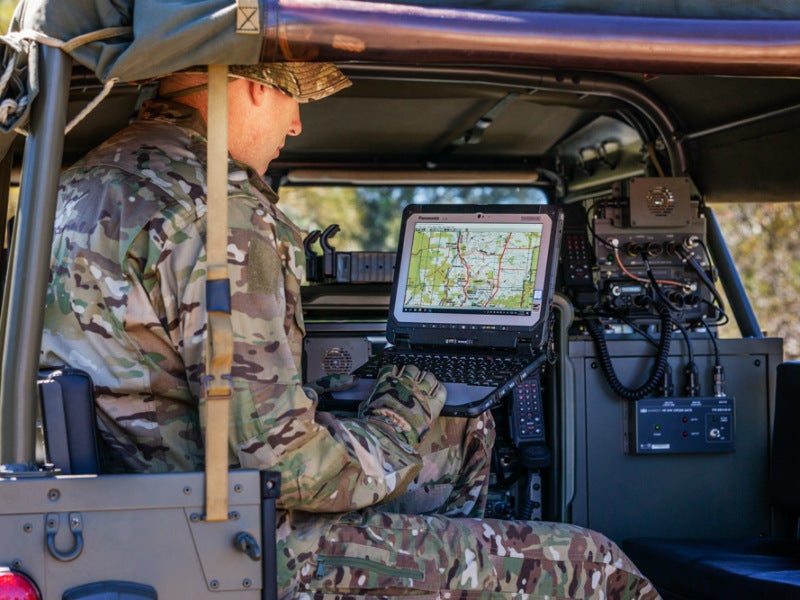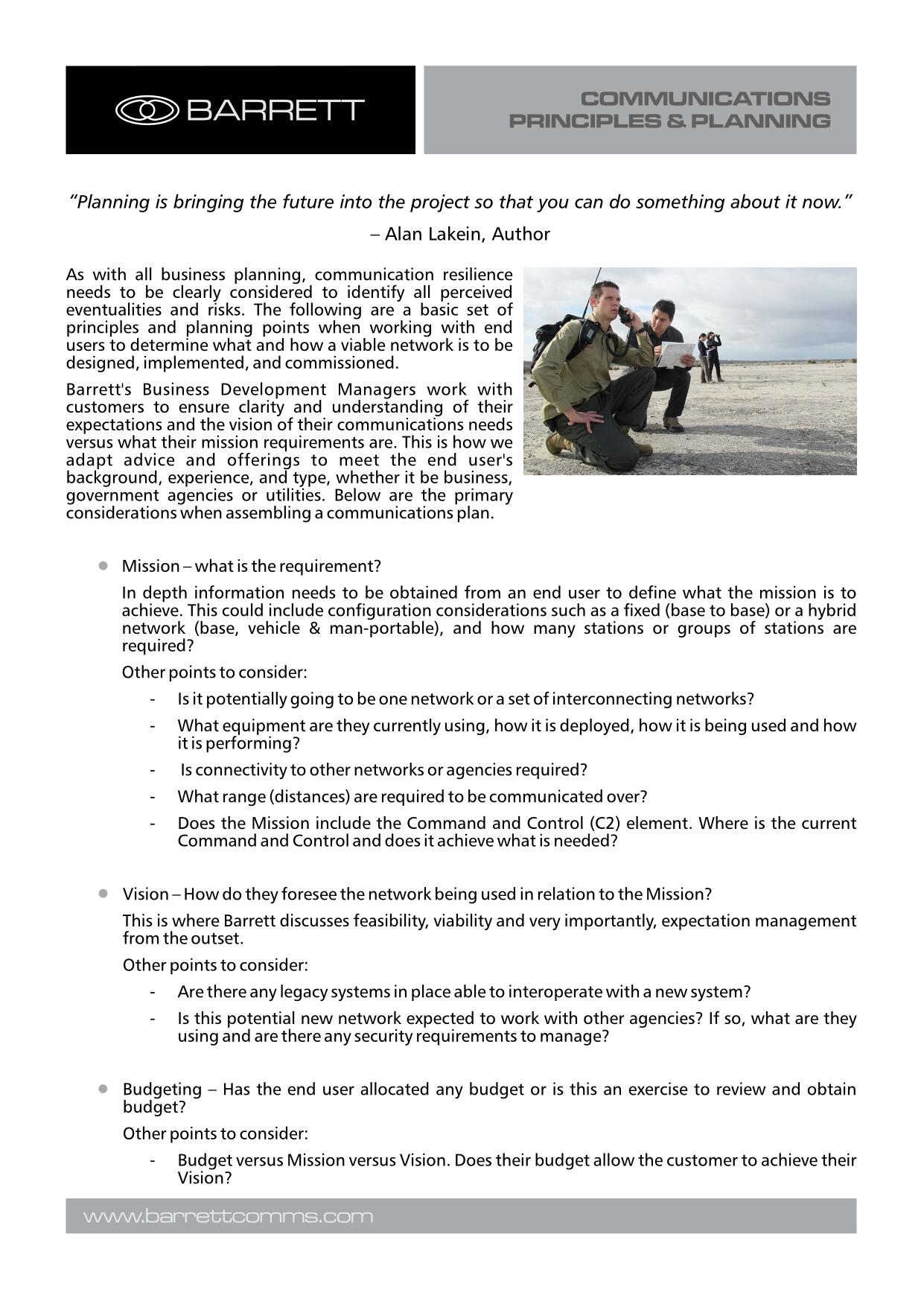
As the location of military operations changes rapidly, communications systems need to be equally as versatile. Barrett Communications’ PRC-2090 tactical HF radio communications systems are designed to be easily interchangeable between vehicle, base station and manpack configurations, providing critical access to communications in any military situation.
Barrett Communications Europe and Africa director of business development, Nigel Pescott, spoke to us about how the company’s solutions can be used to provide reliable communications across the globe.
“The manpack configuration is used when the customer needs to dismount i.e. not in a vehicle or a base station,” explains Mr Pescott. “Many of our customers are deployed to remote locations for extended periods of time where there is no infrastructure, power or vehicles.”
Lightweight, compact radio systems
Weighing just 5.2kg (including battery), the PRC-2090 is one of the smallest portable solutions available on the market and made of lightweight alloy materials. This makes it easy to carry and operate in a tactical environment.
The transceiver has an advanced, fully detachable display that allows operators to use the system without removing it from the backpack. It can be fitted with an extended control interface for tactical operations.
“The manpack package that we supply comes with everything that an end-user would need to go straight out onto patrol and that includes the backpack, long wire, counterpoise earth kit and also the remote display,” Mr Pescott explains.
Advanced tactical communications features
A key feature of Barrett’s HF systems is Digital Voice. This provides clear communications for any tactical environment, which can be crucial to mission success.
“Digital Voice (DV) and Secure Digital Voice (SDV) enable the operator to improve upon standard HF voice quality in both standard and secure modes,” Mr Pescott told us. “HF is quite a noisy medium by nature, and digital voice removes a lot of the background noise and enhances the signal, improving voice transmission for easy understanding.”
Extended operation time for tactical missions
The Barrett PRC-2090 operates with low current consumption, enabling it to operate for more than 20 hours on one battery cartridge.
“Batteries are easily recharged in the field, whilst in operation or during breaks between patrols. Our manpack package is designed for each unit to have two batteries and a fold-out solar panel for recharging,” says Mr Pescott.
“This removes the need for external support from logistical resupply for batteries, simplifies the mission’s logistics burden and reduces the weight that individuals are required to carry.”
The small lightweight spare batteries can be quickly exchanged and include an in-built charge management circuit. “The benefit is that you can connect the battery and charge via the solar panel, whilst the radio is operational, so you do not have to remove the battery for charging,” adds Mr Pescott. This is ideal for challenging terrain and remote locations.
Rapid deployment systems
The RFDS PRC-2090 HF and RFDS PRC-2080 VHF units are designed as self-contained ready-to-go base stations. They can be operational on-site in the time it takes to deploy an antenna.
“They allow mission teams to fly in or drive in and set up an immediate base station with no immediately available external power or infrastructure for at least two to three days. With an automated battery management system inside the RFDS unit, it allows the preconfigured base station and two frequencies of radio to talk to each other,” Mr Pescott says. “All you have to do is deploy an antenna, turn the system on and it’s ready to go, which is why we call it a rapid deploy system.”
Supporting systems for wider communications
Operationally, HF is used for long-range communications. “There are no other long-range secure means of communication that are completely free to air, and that’s the key benefit of HF,” Mr Pescott tells us. “Where we rely on mobile phones and infrastructure, HF does not require infrastructure, which is why it suits the military, peacekeeping and border security markets.”
When missions are deployed from a base station to locations with no infrastructure more than 1,000km away, HF communication systems are used. From there, foot patrols would use handheld VHF radios together with mobile HF stations. Barrett’s 2063 Crossgate is used to facilitate easy communications between the HF and VHF networks, providing seamless communication between forward-edge and long-range individuals.
“Connecting the Crossgate between the HF and VHF station enables full communication interoperability over the VHF short-range and HF long-range frequencies,” highlights Mr Pescott. “So for example, a guy in the field with a 5W [VHF] radio that would normally talk 10km will then have the potential ability to talk 2,000km-3,000km through his 5W [VHF] handheld, whilst connected via the Crossgate into the HF network.”
The Barrett Communications HF and VHF tactical range provides adaptable communications solutions to suit any location. They are a mobile, interchangeable and versatile solution to problems of challenging communications worldwide.





